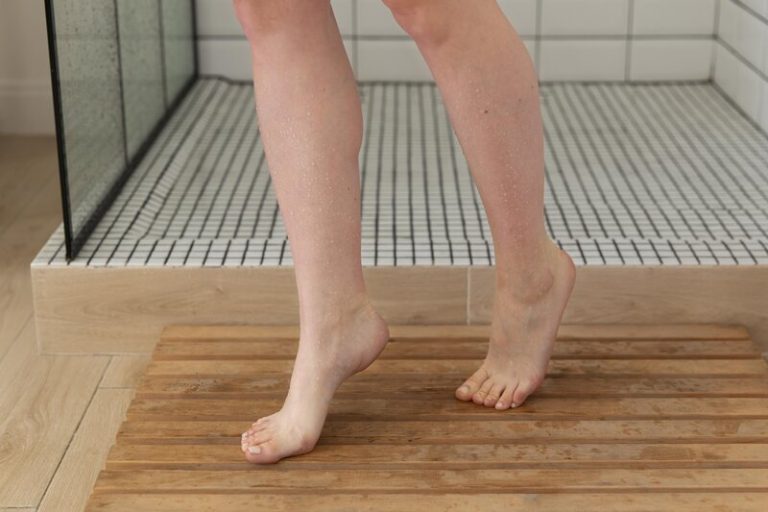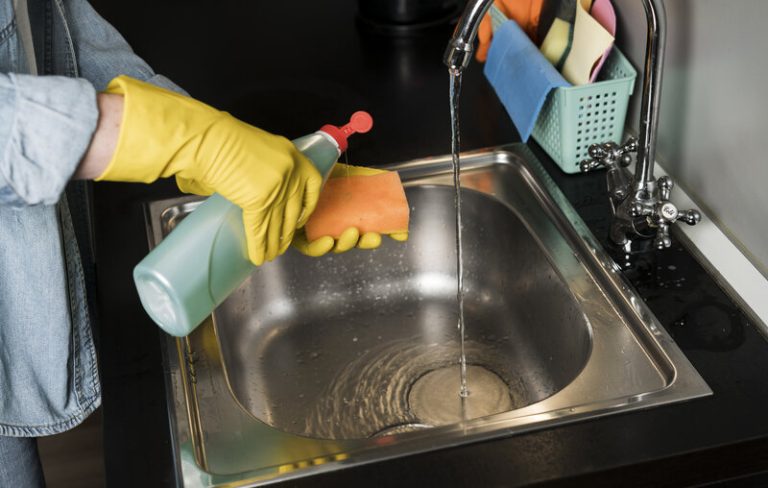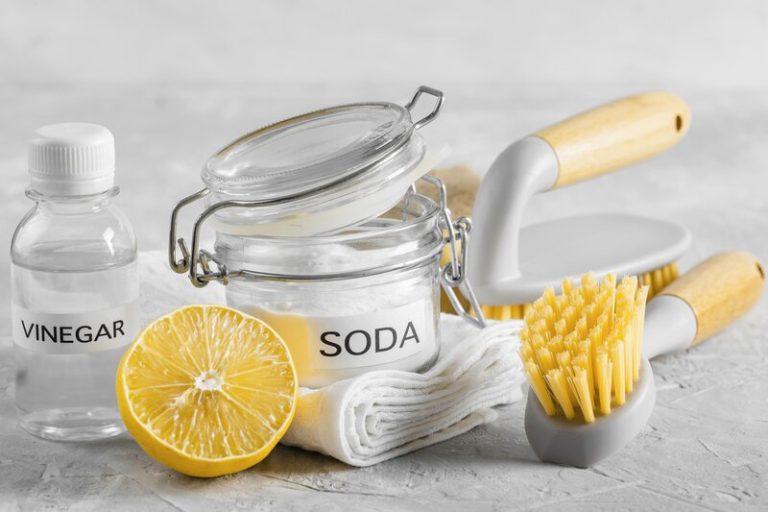Struggling with stubborn ink stains on your carpet? Whether it’s water-based, permanent or ballpoint pen ink, we’ve got you covered by providing a comprehensive guide on how to get ink out of carpet in this article.
From basics like white cloth and alcohol to advanced solutions like hydrogen peroxide and ammonia, we’ll guide you through the step-by-step instructions of removing ink stains on carpet.
Say goodbye to those pesky stains with our comprehensive guide on how to remove ink stains from carpet in your home.
How to Get Ink Out of Carpet?
Removing biro stains from a carpet can be a challenging task, but with the right supplies and techniques, you can effectively eliminate the unsightly marks. Whether it’s water-based ink or permanent ink, knowing the proper methods can make a significant difference in restoring your carpet’s appearance.
To tackle ink stains on your carpet effectively, here is a step-by-step process you can follow:
- Act quickly: Once you notice the ink stain, it’s crucial to start the cleaning process immediately to prevent it from setting into the carpet fibres.
- Blot the stain: Gently blot the ink stain with a clean cloth or paper towel to absorb as much of the ink as possible without spreading it further.
- Test a cleaning solution: Before applying any cleaning agent to the stained area, test it on a small inconspicuous spot to ensure it doesn’t damage or discolour the carpet.
Different Types of Ink Stains
When it comes to understanding how to get ink out of carpet, it is also important for you to know the different types of ink. This matters because each type of ink has a different cleaning method. Below is the full explanation.
a. Water-based Ink Stains
Water-based ink stains on carpets are typically easier to remove compared to other types of ink stains. Using surgical spirit can effectively break down the ink particles, making it easier to lift the stain from the carpet fibres.
For those dealing with a water-based ink mishap on their carpet, acting swiftly is key. Begin by dabbing the area with a clean cloth to absorb any excess ink. Then, grab your secret weapon – surgical spirit.
Dab a small amount of surgical spirit onto a clean cloth or cotton ball and gently dab the stained area. Repeat this process until the ink starts transferring onto the cloth. If surgical spirit isn’t readily available, hydrogen peroxide or ammonia-based cleaners can also be effective alternatives.
b. Permanent Ink Stains
Permanent ink stains pose a greater challenge when it comes to carpet cleaning due to their stubborn nature. Hydrogen peroxide is often recommended for breaking down the pigments in permanent ink, facilitating the removal process without damaging the carpet fibres.
When dealing with permanent ink stains on carpets, it is crucial to act promptly to increase the chances of successful removal. Plus using hydrogen peroxide, a mixture of washing-up liquid and warm water can also be effective in treating the stain.
Blotting the affected area with a clean cloth rather than rubbing it will prevent the ink from spreading further into the carpet fibres. For older or set-in stains, a commercial enzyme cleaner specifically designed for removing ink might be necessary.
c. Ballpoint Ink Stains
Ballpoint ink stains on carpets can be effectively treated with washing-up liquid, which helps to break down the ink’s oily components. By applying washing-up liquid and gently blotting the stain, you can work towards lifting the ink residue from the carpet fibres.
For tougher stains, you might need to combine washing-up liquid with another solution. Mix a small amount of white vinegar with the washing-up liquid to enhance the cleaning power. Create a solution by mixing equal parts of vinegar and washing up liquid in a bowl.
Then, using a clean cloth, dab the solution onto the ink stain. Remember to blot gently and avoid rubbing vigorously, as this can spread the stain further. Allow the solution to sit for a few minutes to penetrate the ink residue before blotting it up.
Supplies Needed to Remove Ink Stains
To effectively tackle ink stains on carpets, you will require essential supplies such as surgical spirit, hydrogen peroxide, washing-up liquid, and ammonia.
a. White Cloth or Paper Towel
A white cloth or kitchen roll is essential for blotting and absorbing excess ink from the carpet surface. Using these absorbent materials can prevent the ink from spreading further and aid in the initial cleaning stages.
When dealing with an ink stain on a carpet, time is of the essence. The quicker you act, the higher the likelihood of successful stain removal. Blotting is the primary technique recommended by experts for dealing with ink spills. By gently pressing the white cloth or kitchen roll onto the stain, you can help lift the ink particles without rubbing them into the carpet fibres, which could worsen the situation.
b. Rubbing Alcohol
Surgical alcohol is a versatile cleaning agent that can effectively dissolve ink stains on carpets. By applying surgical spirit to the stained area and gently blotting, you can begin the process of lifting the ink residue from the carpet fibres.
Once you have applied the surgical alcohol, allow it to sit for a few minutes to penetrate the ink particles deeply. This allows the surgical spirit to break down the ink, making it easier to remove. After letting it sit, use a clean white cloth to blot the area, ensuring that you do not spread the stain further. Repeat this process until the ink stain fades. Remember to test the surgical spirit on a small, inconspicuous area of the carpet first to ensure it does not cause any damage or discolouration.
c. Dish Soap
Washing-up liquid is a gentle yet effective cleaning agent for treating ink stains on carpets. Mixing it with water to create a soapy solution can help break down the ink’s components and facilitate the removal process without causing damage to the carpet fibres.
To create this solution, simply mix a few drops of washing-up liquid with warm water in a container until it forms suds. Apply the soapy mixture directly to the ink stain on the carpet, making sure to saturate the affected area. Gently dab the stain with a clean cloth or sponge, working from the outside to prevent spreading. Continue this process until the ink stain begins to lift. Once the stain is removed, rinse the area with clean water and dab dry with a towel to finish the cleaning process.
d. Hydrogen Peroxide
Hydrogen peroxide is a powerful oxidising agent that can aid in the removal of ink stains from carpets. Its ability to break down pigment molecules makes it an effective solution for treating stubborn stains without harming the carpet fibres.
When dealing with ink stains on carpets, it’s crucial to act quickly to prevent the ink from setting in further. Hydrogen peroxide works by releasing oxygen when applied to the stain, which helps to break down the ink pigments and lift them from the carpet fibres. The bubbling action caused by the oxygen release helps to agitate the stain, making it easier to remove. Hydrogen peroxide is non-toxic and safe for most carpet types, making it a popular choice for stain removal.
e. Ammonia
Ammonia is a versatile cleaning solution that can help tackle stubborn ink stains on carpets. When used in moderation and in the proper dilution, ammonia can aid in breaking down ink residues and facilitating their removal without causing damage to the carpet fibres.
It’s important to note that ammonia should always be diluted with water before use, as using it in its concentrated form can be too harsh and potentially damage the carpet.
To effectively treat an ink stain, mix a small amount of ammonia with water in a spray bottle and apply it directly onto the stained area. Ammonia works by loosening the ink particles, making it easier to blot them away without spreading the stain further.
How to Remove Fresh Ink Stains?
Dealing with fresh ink stains on carpets requires prompt action to prevent the ink from setting into the fibres. Here is a further explanation of how to get ink out of carpet that is new.
a. Blot the Stain with a White Cloth
Blotting the fresh ink stain with a white cloth is the first crucial step in preventing the ink from spreading further into the carpet fibres. By gently pressing the cloth onto the stain, you can absorb excess ink and minimise the extent of the damage.
After blotting the stain, avoid rubbing the affected area vigorously as this might embed the ink deeper into the carpet. Instead, continue blotting with a clean section of the white cloth until minimal ink transfers onto the cloth. Patience is key in this process to ensure effective ink removal without damaging the carpet fibres. Remember to work from the outer edges of the stain towards the centre to prevent it from expanding. Consistency and careful handling are essential to successfully treat the ink stain on your carpet.
b. Apply Rubbing Alcohol
Applying surgical alcohol to the fresh ink stain can help break down the ink particles and prepare the stain for removal.
Next, take a clean, white cloth and gently dab the stained area to absorb the dissolved ink. It’s important to remember not to rub the stain vigorously as this can spread the ink further into the carpet fibres.
Surgical alcohol acts as a solvent, effectively dissolving the ink pigments, making it easier to lift the stain. Repeat the process until the ink stain fades, then rinse the area with cold water and dab dry. The sooner you address the stain, the more successful the outcome is likely to be.
c. Rinse with Water and Dry
After treating the fresh ink stain with surgical alcohol, rinsing the area with water and allowing it to dry is essential for completing the cleaning process. Thoroughly drying the spot prevents moisture retention and ensures the stain is fully removed.
Rinsing the treated area should be done delicately to avoid spreading the ink stain further. Use a clean cloth or sponge dipped in cool water to gently dab at the affected spot. Once you’ve removed the excess cleaning solution, it’s crucial to let the area air dry completely. This final step not only helps in eliminating any remaining ink residue but also prevents the growth of mould or mildew due to trapped moisture.
How to Remove Dried Ink Stains?
Addressing dried ink stains on carpets requires a different approach due to the ink’s penetration into the fibres over time. Here is a complete guide on how to get ink out of a carpet that has been dry for a while.
a. Apply Dish Soap and Water Mixture
Creating a solution of washing up liquid and water is an effective method for treating dried ink stains on carpets. By gently applying the soapy mixture to the stained area and allowing it to penetrate the fibres, you can begin the process of breaking down the dried ink residue.
Once you have applied the solution, it is crucial to let it sit and work its magic on the stain. Remember, patience is key here; do not rush the process. The soap will start to loosen the ink, making it easier to remove.
After letting it sit for a while, take a clean cloth or sponge and gently dab at the stained area. Avoid rubbing vigorously as this could spread the ink further into the carpet fibres. Instead, use a blotting motion to lift the ink off.
b. Use Hydrogen Peroxide
Hydrogen peroxide can be a valuable ally in removing stubborn dried ink stains from carpets. Its oxidising properties help break down the ink pigments, making it easier to lift the stain from the carpet fibres without causing damage.
When dealing with dried ink stains, a solution of hydrogen peroxide can work wonders. By applying a mixture of hydrogen peroxide and a gentle detergent to the affected area, you allow the oxidative power of the peroxide to penetrate the ink particles.
This breakdown of the ink’s chemical structure helps to loosen its hold on the carpet fibres, thereby facilitating the cleaning process. Remember to test the solution on a small, inconspicuous area first to ensure it does not discolour or damage the carpet.
c. Try Ammonia Solution
An ammonia solution can serve as a potent cleaner for dried ink stains on carpets. By using an appropriately diluted ammonia solution and applying it to the stained area, you can help dislodge the dried ink residue and restore the carpet’s original condition.
It is crucial to handle ammonia solutions with care due to their potentially strong chemical properties. When preparing the solution, ensure that you follow the recommended dilution ratios to avoid any damage to the carpet fibres.
Always test the solution on a small, inconspicuous area of the carpet first to check for any adverse reactions. It’s also advisable to wear gloves and work in a well-ventilated area when dealing with cleaning solutions containing ammonia.
Some Tips for Removing Ink Stains from Carpet
Dealing with stubborn ink stains on carpets may require additional strategies and techniques for effective removal. Well, here are some tips on how to get ink out of carpet.
a. Use a Steam Cleaner
Employing a steam cleaner can be an effective method for combating tough ink stains on carpets. The high-temperature steam helps break down the ink residues, making it easier to lift them from the carpet fibres without excessive scrubbing or damage.
When dealing with ink stains on carpets, the first step is to fill the steam cleaner with water and switch it on to heat up. Once the steam reaches the desired temperature, cautiously direct the nozzle towards the stained area, allowing the hot steam to penetrate the fibres. The steam not only loosens the ink but also sanitises the carpet, eliminating harmful bacteria and odours.
b. Try a Commercial Ink Stain Remover
Exploring the use of a commercial ink stain remover can provide a targeted solution for tough ink stains on carpets. These specialised products are formulated to break down ink pigments effectively, offering a convenient way to restore the carpet’s pristine condition.
Typically, these commercial ink stain removers come in user-friendly packaging, equipped with detailed instructions for easy application. The beauty of using such products lies in their ability to tackle stubborn stains without causing damage to the carpet fibres. These solutions often work quickly, saving both time and effort in the cleaning process.
By opting for a commercial ink stain remover, individuals can effectively address ink stains on carpets and enjoy the benefits of a spotless and fresh-looking carpet surface.
c. Test on a Small Area First
Before applying any cleaning solution to a tough ink stain on carpets, it is advisable to conduct a patch test on a small inconspicuous area. This precautionary measure helps ensure that the cleaning product is compatible with the carpet fibres and does not cause damage.
Spot testing is crucial because it allows you to verify the product’s security on your specific carpet material before full application.
By dabbing a small amount of the cleaning solution on the test area and monitoring for adverse reactions like discolouration or fibre damage, you can prevent potential disasters on a larger scale. Remember, different carpets react differently to chemicals, so this simple spot test can save you from ruining your entire carpet’s appearance.
The above is a detailed explanation of how to get ink out of carpet, both for fresh and dried or old stains. It’s evident that dealing with stubborn stains like ink requires expertise and proper cleaning techniques to ensure the carpet’s integrity is preserved while effectively removing the blemish.
TEKA Cleaning specialises in tackling tough stains of all kinds, including ink stains. Our trained professionals have the knowledge, experience, and specialised equipment to safely and effectively remove stubborn stains from your carpets without causing damage.
Therefore, why struggle with ink stains when you can rely on TEKA Cleaning to restore your carpets to their pristine condition?
Book now or give us a call at 01233 751 544 to experience the difference our professional carpet cleaning services can make. Trust TEKA Cleaning for reliable, efficient, and eco-friendly carpet cleaning solutions in Cambridge, UK. Contact us today and enjoy a cleaner, healthier, and more visually appealing living environment!
Read also:











